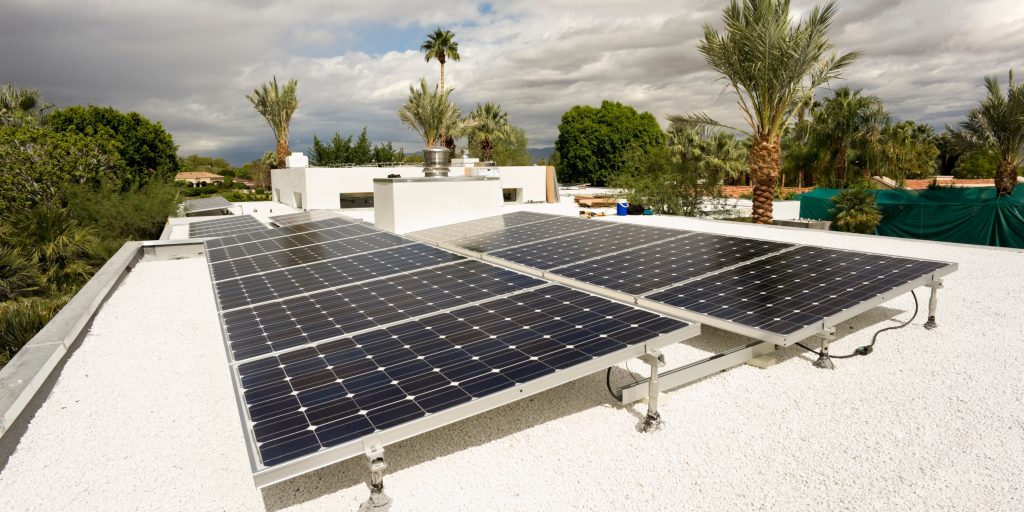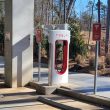Infrastructure improvements in cities often feature clean energy or connected technologies
The most in-demand products and services in local governments fall into three interconnected buckets, says Matthew Britt, general manager of smart cities at Honeywell. The buckets, he says, are urban mobility, sustainability and resilience, and public safety.
“Urban mobility begins with road infrastructure and understanding how to move people around cities more effectively and sustainably. At Honeywell, we have analytics capabilities to optimize traffic flow so that citizens can move more effectively based on their needs at any given time,” he explains. He adds that his firm’s recent collaboration with Mastercard helps enhance the citizen experience with city services like public transportation and parking. “That makes their interaction with these services seamless through contactless payments.”
Regarding sustainability and resilience, Britt says the Infrastructure Investments and Jobs Act (IIJA) has provided increased access to funds to advance clean energy projects. He believes that gives cities the ability to move away from diesel generators and invest in renewables. “Our joint work with Duke Energy, for example, focuses on strengthening energy security, focusing on communities with pressing resiliency needs and developing scaled solutions to lessen the impact of power outages and other grid disruptions related to climate change.”
Britt believes that the federal IIJA legislation may help ensure that the importance of renewable projects will continue to grow. “The Infrastructure Investment and Jobs Act has provided a $65 billion investment in clean energy transmission, helping communities make a move toward renewable energy with solar, wind and hydroelectric power. Of the three, solar energy is being embraced more.” Solar, says Britt, has been expanding its traditional popularity in sunnier cities, like Honolulu and San Antonio. Solar proponents, he adds are boosting installations in cities across the east coast of the U.S.
Lastly, public safety starts with better situational awareness, Britt believes. “With a smart city, there’s an opportunity to aggregate information from traffic, parking, emergency services, safety and security to not only gain situational awareness but also to use that data to make better decision-making, allocate resources and improve response times.” All these factors, Britt tells Co-op Solutions, help improve quality of life for citizens. He says these three interconnected buckets help administrators focus on creating better integrated cities that are easy to navigate, safer and more sustainable.
With its partners, Honeywell is working to upgrade its offerings to local governments. “Our collaboration with Duke Energy will provide community resiliency in a way that’s never been done before. We are jointly developing municipal microgrids to not only improve access to essential resources for the underserved but also improve the efficiency of city operations,” Britt explains.
He adds that Honeywell’s partnering work with Mastercard is driving digital transformation in municipalities around the world, helping update infrastructures to become “contactless” with services like public transportation, parking and paying utility bills. “For example, in Egypt’s New Administrative Capital, we have implemented ‘smart metering’ to provide better awareness on water consumption and encourage sustainable water use. We have integrated with Mastercard’s electronic payment platform so that citizens can pay their utility bills within the Citizen app and use the data within the application to control their water consumption.” Through the arrangement, the city benefits from real-time data to drive sustainability by monitoring for leaks. The city can then make proactive decisions to reduce waste. “Overall, we’re focused on streamlining the number of touchpoints by creating an aggregated system that seamlessly integrates into every asset of life,” Britt concludes.
Beyond safety, improving social equity and energy resiliency are top priorities for local governments in 2022-2023, Britt believes. “These are connected issues as disadvantaged communities are more likely to be disproportionately affected by power outages. An example of how to address this is for cities to create municipal microgrids so in the case of a natural disaster or power outage, the community can still access fresh water and climate-controlled facilities.”
Cities across the country are looking to reduce stress on their power grids, Britt explains. “U.S. cities are interested in improving their critical infrastructures and technologies that they can leverage for alternate power. Similar to the example of municipal microgrids as power grids become more strained, cities are also looking for power alternatives for their owned facilities such as police stations, fire stations and wastewater treatment facilities.” With those alternate power sources, communities can continue to have access to these types of services even during a power outage. Britt’s conclusion: “Large-scale municipal microgrids can help transition unused power back into the grid, further reducing the strain on the grid.”
Honeywell has a cooperative contract with OMNIA Partners to provide Energy Performance Contracting Services to public sector participants. The company is positioned to blend physical products with software to support connected systems that improve homes, buildings, factories, utilities, vehicles and aircraft. The firm’s innovations enable a safer, more comfortable and more productive world.
In 2022, nearly half of Honeywell’s revenue is linked to energy-efficient products, and a growing portion supports clean air and clean water initiatives. More than half of the firm’s engineers are focused on software and 100 percent of its global software divisions are compatible with Capability Maturity Model Integration (CMMI) Maturity Level 5. This training and appraisal program helps enable continuous improvement and innovation for products that are intuitive, reliable and meet customer needs.
Michael Keating is senior editor for American City & County. Contact him at [email protected].




















